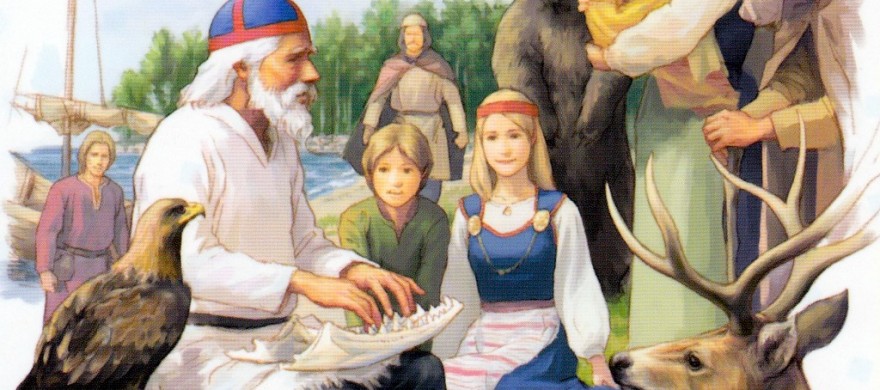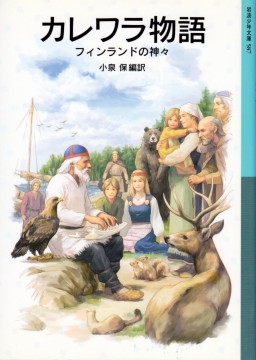Tamotsu Koizumi 1976
The linguist Tamotsu Koizumi did not strive for musicality in his translation in the same way as Kakutan Morimoto had done in his translation. Morimoto had translated the Kalevala from English, but Koizumi was afraid that this kind of chain of translations would lead to inaccurate interpretations. Since his own goal for doing a new translation of the Kalevala was “to be true to the original language”, the translation could not avoid becoming very grammatical, a word-by-word translation. However, Koizumi replaced the musicality of the poems by using ideograms that are visual symbols and characteristic for the Japanese language.
A visual poetic form
Also, the original language does not work well when it is translated if the target language does not have the same style as the source language. Artistry, in other words rhetorical expressions and the time dimension of the language, became important factors in Koizumi’s translation of the Kalevala. Ryūta Akamatsu has stated that Morimoto, on the other hand, strived in his translations to express the rhetorical fine nuances and smoothness of the Kalevala. A reason for this was that “if our aim is to convey the elegance of the source language to the Japanese language, it cannot be banal prose”.
Koizumi’s goal was to use a language in the translation that was as easily understood as possible in order to make it easier for the young generation to learn to know the text. When it comes to artistry and the time dimension, Koizumi’s translation is not as true to the original text as the translation by Morimoto. By using modern language, Koizumi has, however, managed to attain his own important goal: that the meaning of the text in the Kalevala would become clear to the younger generations. The Japanese translation by Morimoto was, at this point of time, already forty years old. Because the target language had developed during this period of time, the language used in the translation had to be updated according to the expressions used in the modern language as well. Koizumi’s choice to translate the Kalevala word by word using modern Japanese language has increased the knowledge of the Kalevala in Japan.
Hiroko Suenobu ja Jun Igarashi: “Kalevala japaniksi” – Kalevala maailmalla. Helsinki: SKS. 2012.

